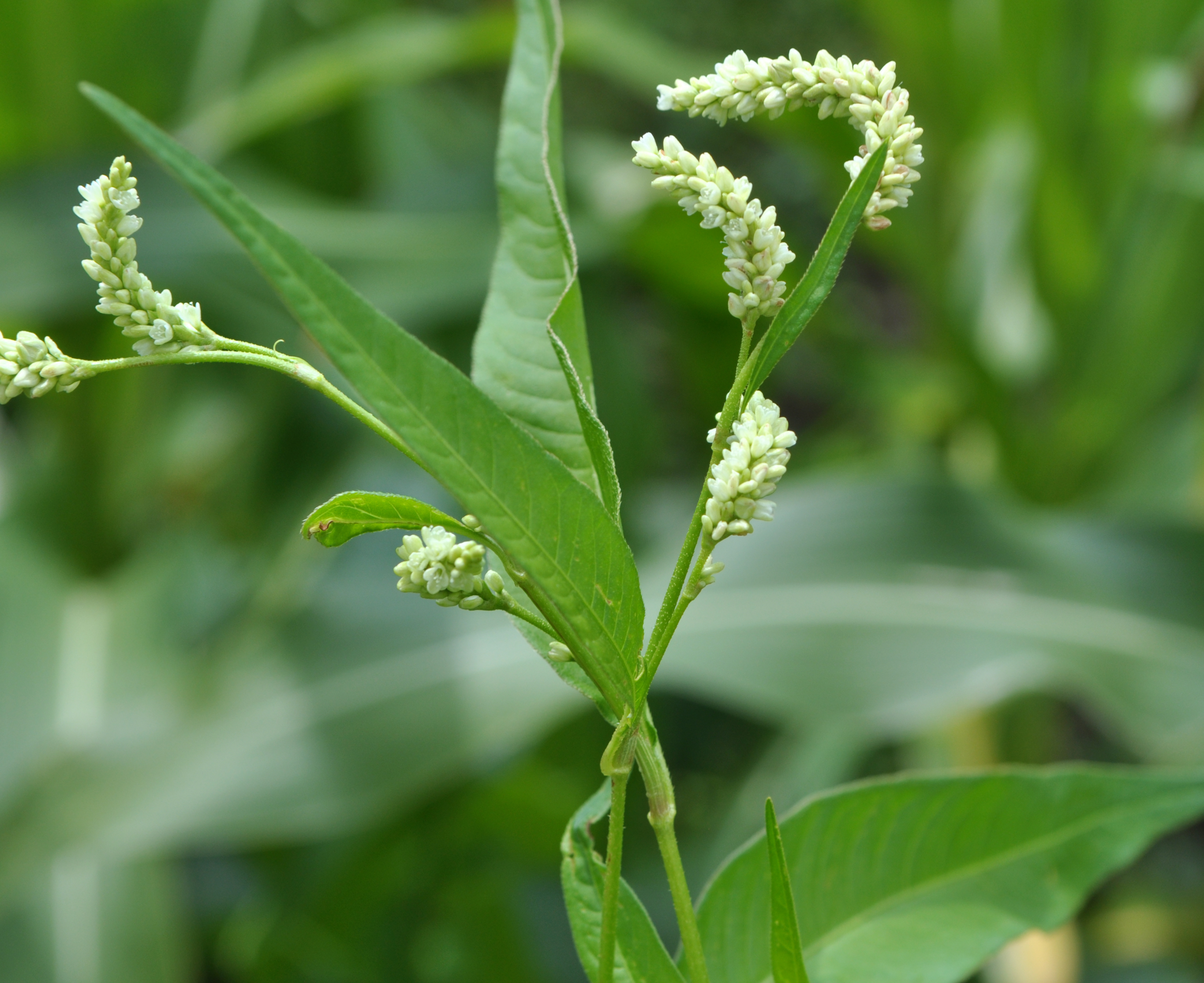Pale persicaria
(Persicaria lapathifolia)

Description
Persicaria lapathifolia (syn. Polygonum lapathifolium), known as pale persicaria, is a plant of the family Polygonaceae. It is closely related to Persicaria maculosa and as such is considered a weed in Britain and Europe. Other common names for the plant include pale smartweed, curlytop knotweed, and willow weed. It is a species complex made up of a great many varying forms, sometimes considered varieties. The environment also has a strong influence on the morphology of an individual plant. Persicaria lapathifolia is an annual herb with erect reddish stems with swollen joints, growing to a height of 20 to 80 cm (8 to 31 in). The leaves are alternate with short stalks, often densely hairy underneath. The leaf blades often have a dark-coloured blotch in the centre and are lanceolate or narrowly elliptical and have entire margins. Each leaf base has stipules which are fused into a stem-enclosing sheath that is loose and fringed with few if any hairs at the upper end. The inflorescence is a dense spike, often nodding. The perianth of each tiny pink flower consists of four or five lobes, fused near the base. There are six stamens, two partially fused carpels and two styles. The fruit is a rounded, flattened nut. This plant flowers from July to September in northern temperate regions. Persicaria lapathifolia is found in many parts of both the Old World and New World. Many varietal and sub-specific names have been coined, as the plant is morphologically variable. The species is found growing on the sea shore and in disturbed ground such as arable land, gardens, waste ground, rubbish tips and road verges. The genus includes annual and perennial herbs with taproots or fibrous root systems, or with rhizomes or stolons. The stems are often erect but may be prostrate along the ground, and some species are prickly. The stems are self-supporting or twining and climbing. The leaves are alternately arranged, deciduous, and variously shaped. The brownish or reddish ochrea may be leathery to papery. The inflorescence may be a panicle or a spikelike or headlike arrangement of fascicles of flowers. The flower is white, greenish, reddish, pink or purple, with the tepals partially fused together along the bases. The fruit is an achene which can take a number of shapes, including a disc or a sphere.
Taxonomic tree:







